Understanding Dartboard Anatomy is crucial for any dart player, from beginners to seasoned pros, as it directly impacts your gameplay. This article breaks down each component of a dartboard, explaining its purpose and how it affects your accuracy and scoring, allowing you to make informed decisions about equipment and strategy.
⚠️ Still Using Pen & Paper (or a Chalkboard)?! ⚠️
Step into the future! The Dart Counter App handles all the scoring, suggests checkouts, and tracks your stats automatically. It's easier than you think!
Try the Smart Dart Counter App FREE!Ready for an upgrade? Click above!
A Deep Dive into Understanding Dartboard Anatomy
A dartboard isn’t just a circular target; it’s a meticulously designed piece of equipment with specific zones, materials, and dimensions. Understanding Dartboard Anatomy gives you a deeper appreciation for the game and allows you to choose the right equipment for your playing style. Let’s explore the various components.
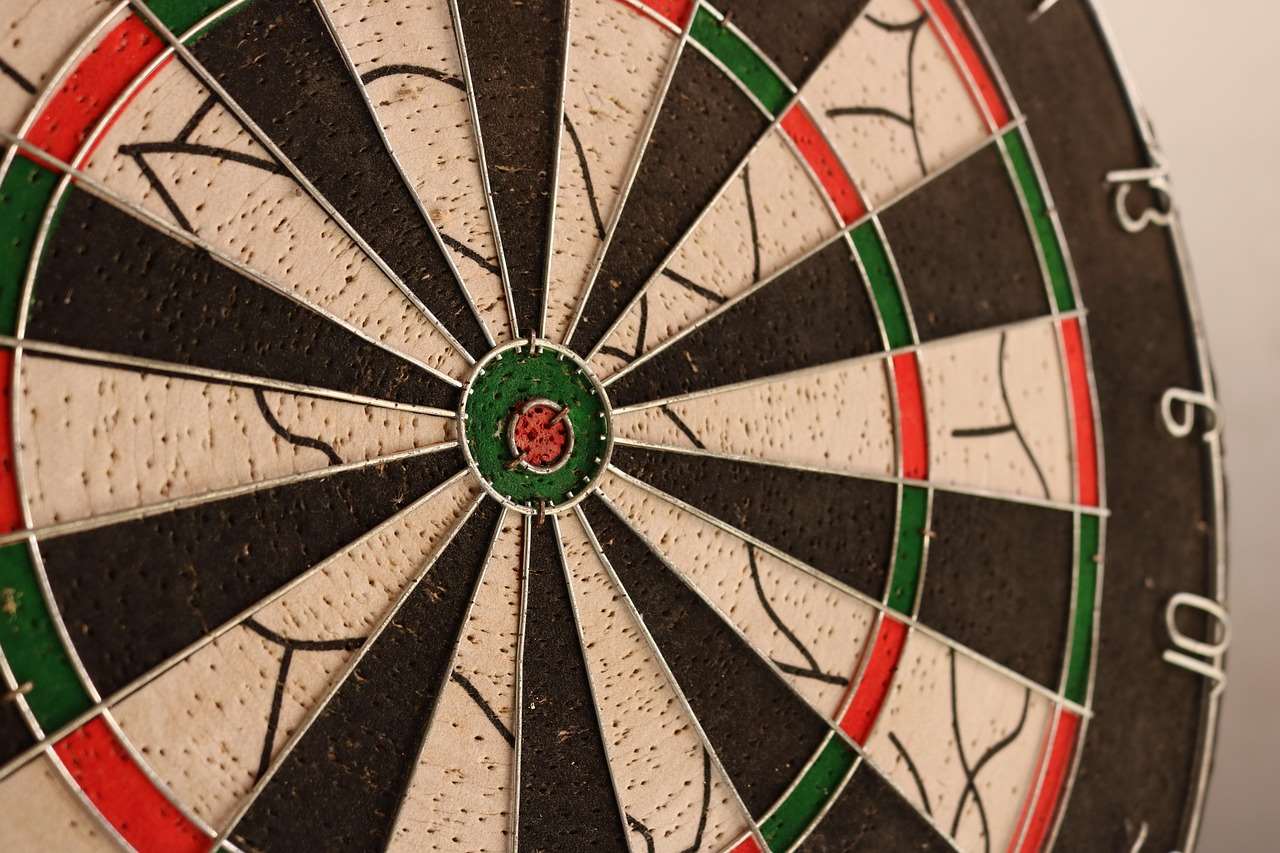
The Dartboard Face: Sections and Scoring
The most visible part of the dartboard is its face, divided into twenty numbered sections, each representing a different score value. These sections are further divided by thin wire, known as the spider. The arrangement of these sections and wires significantly influences the game’s strategy.
- Single Sections: The largest areas between the wires represent single scores.
- Doubles Ring: The outer ring, usually red and green, doubles the score of the section it’s in. Hitting a dart here is often crucial for finishing legs.
- Trebles Ring: The inner ring, also red and green, triples the score of the section. The treble 20 is a high-scoring target.
- Bullseye: The center of the board has two parts: the outer bull (25 points) and the inner bull, or double bull (50 points).
Targeting specific areas like the double ring or treble ring requires precision, and Understanding Dartboard Anatomy helps you appreciate the skill involved. For tips on enhancing your dartboard setup, see our article on Optimal Dartboard Lighting Solutions Guide. If you are in the market for new darts, you should Choose Best Dart Equipment.
The Spider: Dividing and Defining the Board
The spider, constructed from thin wire or blade, is the framework dividing the dartboard into its scoring sections. The spider’s design impacts bounce-outs and scoring consistency.
Types of Spider Construction
- Round Wire: Traditional dartboards often use round wire, which is embedded into the sisal. This can lead to more bounce-outs.
- Blade Wire: Modern, high-quality dartboards use blade wire, a thinner, sharper design that sits flush with the sisal. Blade wire significantly reduces bounce-outs because the dart has a better chance of deflecting into the board rather than bouncing off.
- Staple-Free: The best dartboards feature staple-free construction, meaning the spider is embedded without using staples, further minimizing bounce-outs.
The choice of spider material and construction is a key factor when selecting a dartboard. A thinner, blade-wire spider will generally offer a better playing experience. Consider the benefits of LED Dartboard Lights Benefits when setting up your dartboard area.
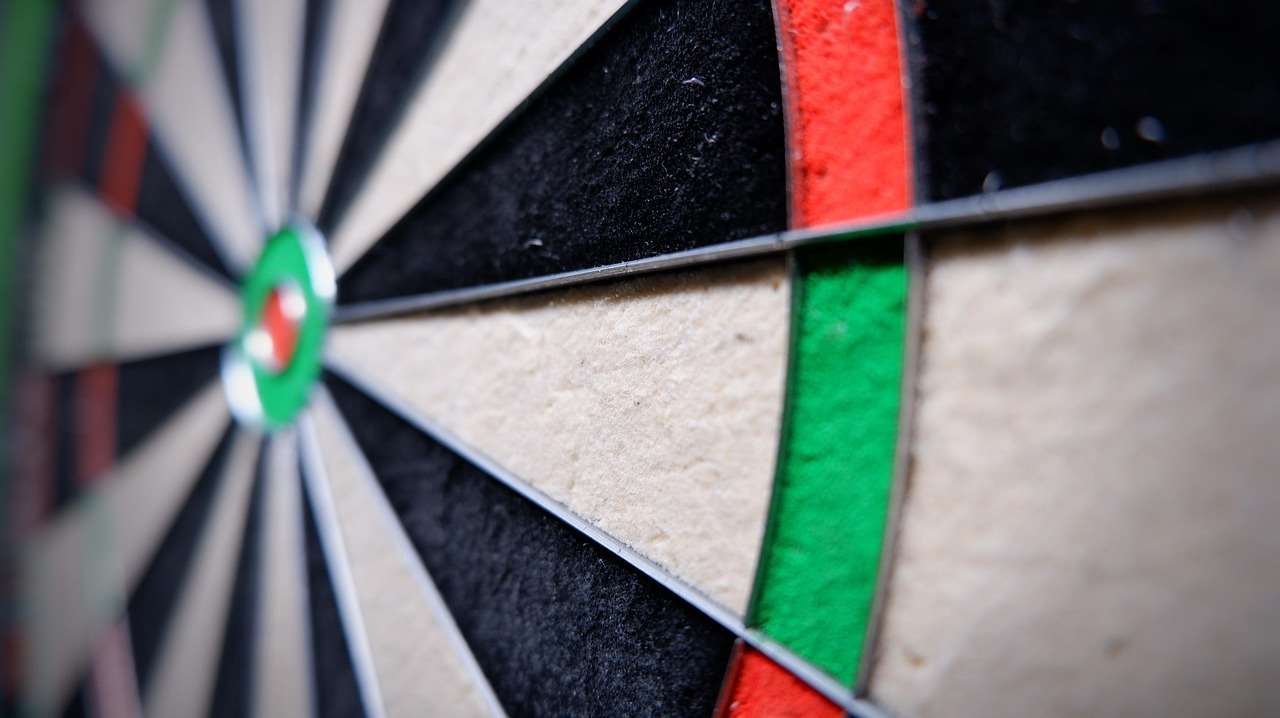
The Sisal Fiber: The Heart of the Dartboard
The playing surface of a dartboard is made from tightly packed sisal fibers. Sisal is a natural fiber that’s durable and self-healing, making it ideal for withstanding repeated dart impacts.
Sisal Quality and Density
The quality and density of the sisal significantly impact the dartboard’s longevity and performance. Here’s what to consider:
- High-Grade Sisal: Dartboards made from high-grade sisal will last longer and offer better dart retention.
- Proper Density: A tightly packed sisal matrix ensures that darts stick firmly and the board heals properly after each throw.
- Uniform Color: Look for a board with a uniform color, indicating consistent sisal quality.
Regularly rotating your dartboard can extend its lifespan by evenly distributing wear. The type of lighting you choose also plays a part in the setup; learn more about Types Optimal Dartboard Lighting.
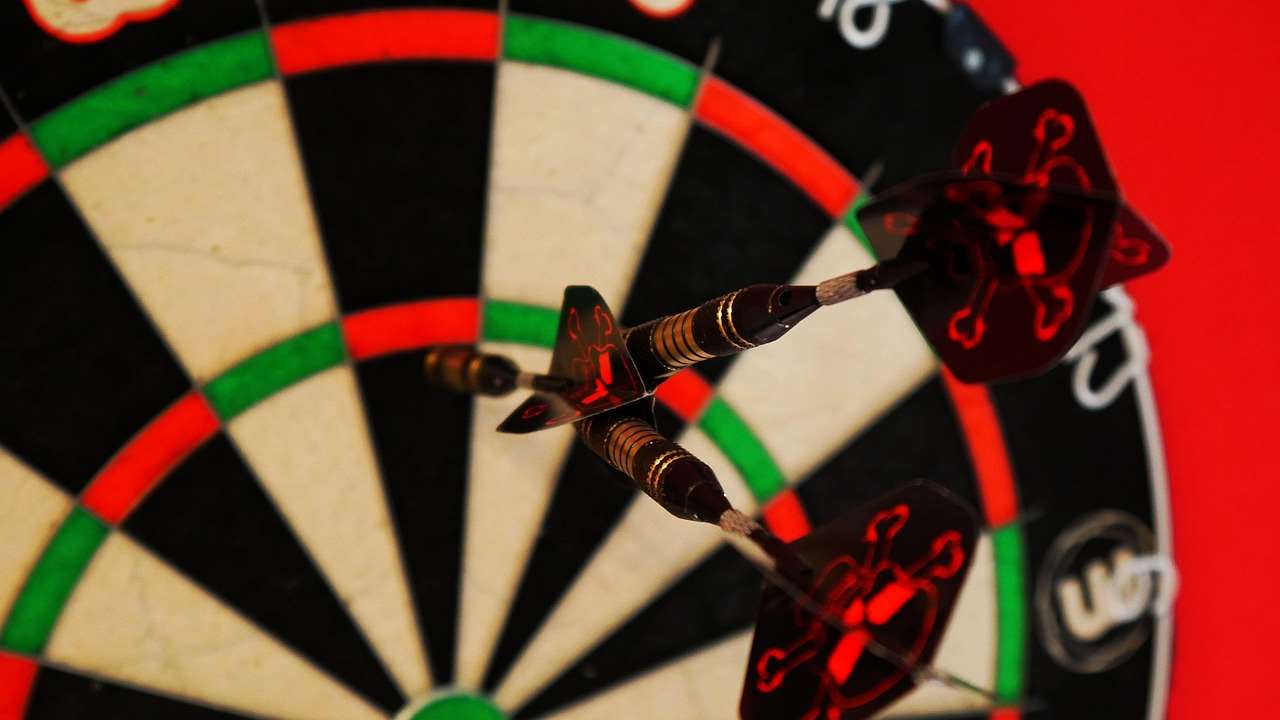
Dartboard Dimensions and Regulations
Standard dartboard dimensions are regulated by organizations like the World Darts Federation (WDF) to ensure fair play. Understanding Dartboard Anatomy also involves knowing these measurements.
Official Dartboard Measurements
- Diameter: The overall diameter of a dartboard is 17 3/4 inches (451 mm).
- Thickness: Dartboards typically have a thickness of around 1 1/2 inches (38 mm).
- Bullseye Height: The bullseye should be 5 feet 8 inches (1.73 meters) from the floor.
- Throwing Distance: The throwing line (oche) should be 7 feet 9 1/4 inches (2.37 meters) from the face of the dartboard.
Adhering to these dimensions is crucial for practicing accurately and competing fairly. Always double-check your setup to ensure it meets these standards.
Understanding the Bullseye: The Center of Attention
The bullseye is the most iconic part of the dartboard, and hitting it consistently can significantly boost your score. Knowing its dimensions and strategic importance is key to Understanding Dartboard Anatomy.
The Outer and Inner Bull
- Outer Bull (25 points): Often called the single bull, this ring surrounds the inner bull.
- Inner Bull (50 points): Also known as the double bull, this center circle is worth double the outer bull and is a crucial target for finishing legs.
Mastering bullseye accuracy requires consistent practice and a good understanding of your throwing technique. Ensure your dartboard is well-lit to improve visibility; consider different Best Dartboard Lighting Systems.
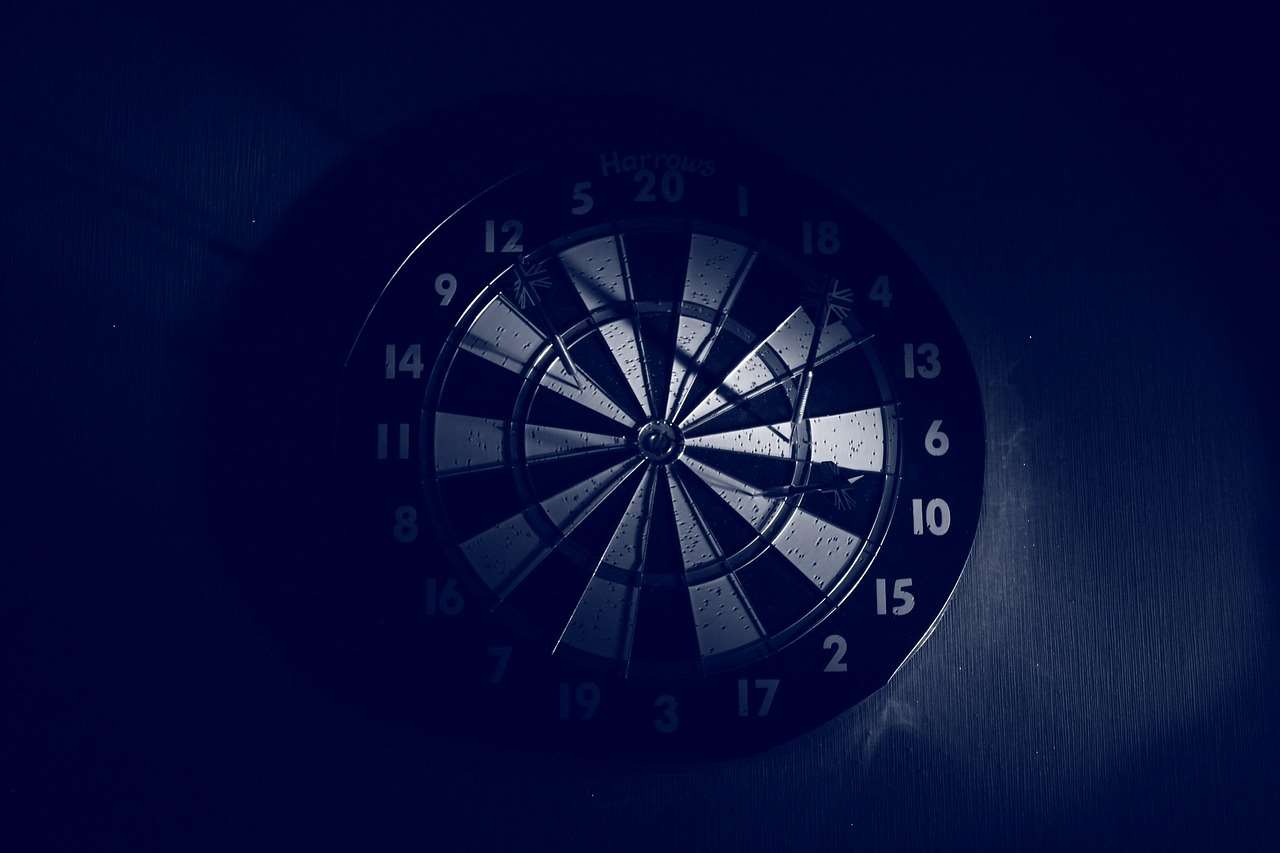
Dartboard Maintenance: Keeping Your Board in Top Condition
Proper maintenance can significantly extend the lifespan of your dartboard and ensure consistent performance. Knowing how to care for your board is part of Understanding Dartboard Anatomy in the broader sense.
Tips for Dartboard Maintenance
- Rotate Regularly: Rotate the dartboard periodically to distribute wear evenly. This prevents certain sections from becoming overly worn.
- Remove Darts Properly: Always remove darts by twisting them gently as you pull them out. This minimizes damage to the sisal fibers.
- Keep It Dry: Avoid exposing your dartboard to moisture, as this can damage the sisal fibers.
- Clean Occasionally: Use a soft brush to remove any loose fibers or dust from the board.
By following these simple maintenance tips, you can keep your dartboard in excellent condition for years to come. Consider options such as Cabinet Lighting For Dartboards to enhance your dartboard’s protection.
Bounce-Outs: Minimizing Frustration
Bounce-outs are a common frustration for dart players. Understanding Dartboard Anatomy can help you minimize them.
Factors Affecting Bounce-Outs
- Dartboard Quality: High-quality dartboards with blade wire reduce bounce-outs.
- Dart Condition: Darts with sharp points are less likely to bounce out. Regularly sharpen your dart points.
- Throwing Technique: A consistent throwing technique helps ensure your darts hit the board squarely.
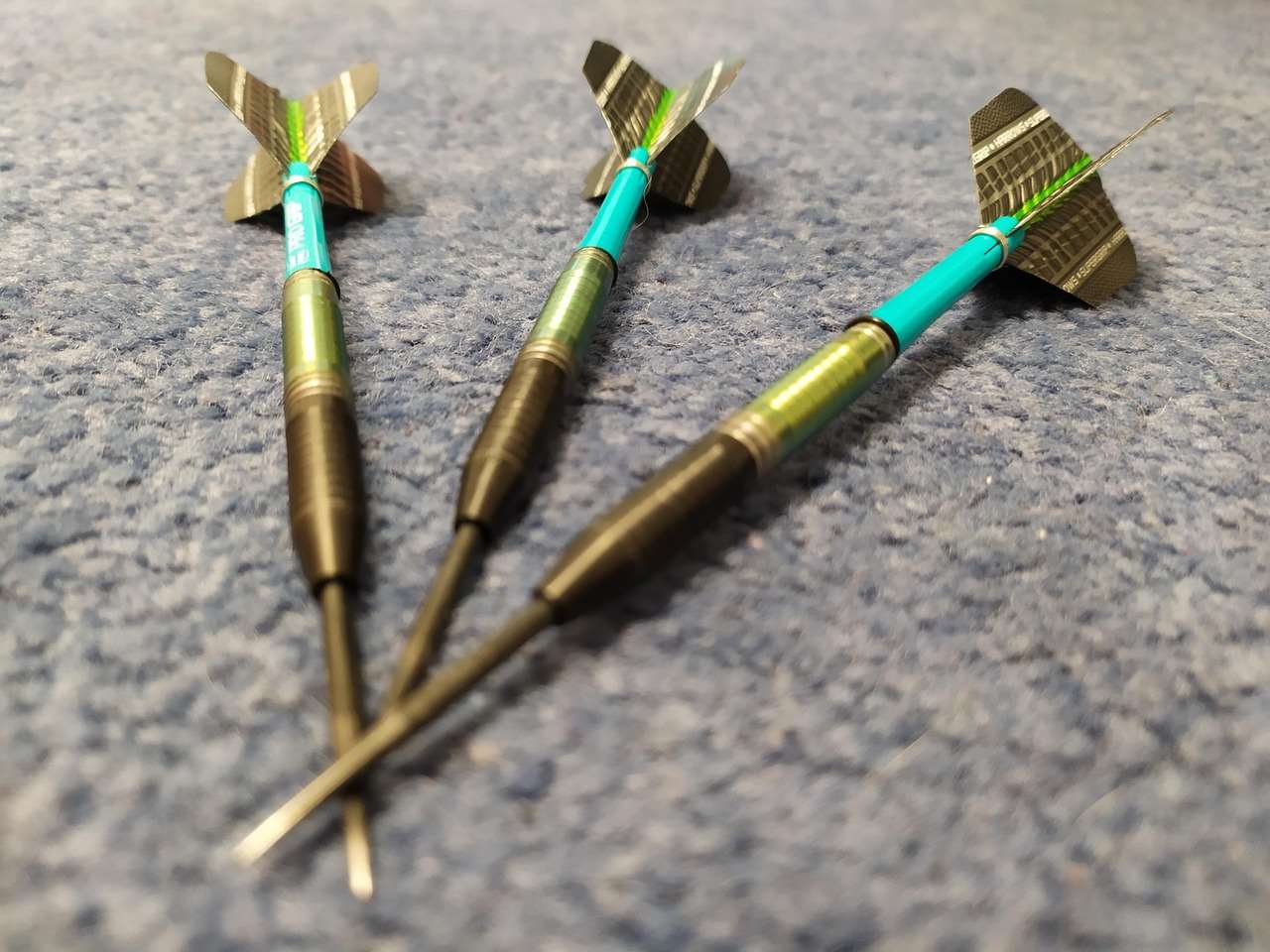
Investing in a good quality dartboard and maintaining your darts can significantly reduce bounce-outs. If shadows are a concern, try to Reduce Dartboard Shadows Effectively. Understanding Dartboard Anatomy and optimizing each component will lead to a better playing experience.
Conclusion
Understanding Dartboard Anatomy is essential for anyone looking to improve their dart game, from selecting the right equipment to maintaining its condition. By grasping the intricacies of each component – from the spider and sisal to the bullseye and dimensions – you can enhance your accuracy, reduce bounce-outs, and extend the lifespan of your board. Invest in quality equipment, maintain it diligently, and you’ll be well on your way to hitting those doubles and trebles with confidence. Now that you have a solid understanding of dartboard anatomy, it’s time to put that knowledge into action and elevate your game! Consider researching various dartboard setups and lighting options to optimize your playing experience. Get throwing!
Hi, I’m Dieter, and I created Dartcounter (Dartcounterapp.com). My motivation wasn’t being a darts expert – quite the opposite! When I first started playing, I loved the game but found keeping accurate scores and tracking stats difficult and distracting.
I figured I couldn’t be the only one struggling with this. So, I decided to build a solution: an easy-to-use application that everyone, no matter their experience level, could use to manage scoring effortlessly.
My goal for Dartcounter was simple: let the app handle the numbers – the scoring, the averages, the stats, even checkout suggestions – so players could focus purely on their throw and enjoying the game. It began as a way to solve my own beginner’s problem, and I’m thrilled it has grown into a helpful tool for the wider darts community.